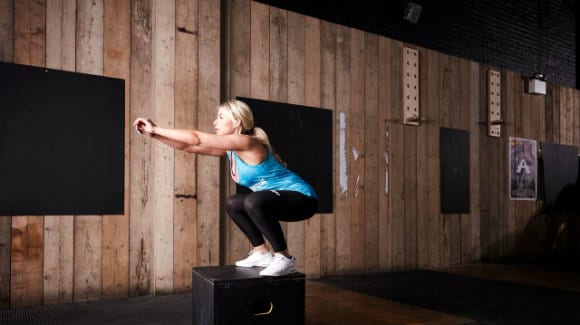By healthiergang writer , former competitive athlete and currently Bodybuilding athlete (Bikini category).
Cardiofitness
cardiofitness we mean any training protocol aimed at improving cardiorespiratory efficiency.
The first reflection that can be made is that yes, all types of work have a beneficial effect in this sense. Cardiofitness, however, is that type of activity whose only and main purpose is precisely that of improve this system with the repercussions on a systemic level that we will now analyze.
Is It Really Good?
The first question we must ask ourselves is therefore ...Do you really need to practice this type of activity? To which benefits can bring?
THEsystemic adaptation given by cardiofitness is not a trivial matter. We can immediately see that we have effects that they affect both the circulatory system (cardiovascular) both on that respiratory. These systems are fundamental for the health of the person, in this sense therefore a cardiofitness activity protracted over time certainly allows to improve and slow down part of the aging processes and get healthier with age.
A second field in which cardiofitness is useful is that sports. In most sports, the improvement of the cardiovascular system is essential to achieve a sports improvement, it is no coincidence that training in this sense is the basis of most of the protocols used in different sports.
We will return to this topic later, for now let's analyze what happens and in what terms we can notice an improvement.
# 1 Aerobic power
First we have an improvement in the aerobic power, therefore of the ability to sustain a prolonged submaximal performance. This occurs in parallel with the improvement in VO2Max (8), ie submaximal aerobic capacity.
However, it should be noted that the extent of these improvements varies from individual to individual, this also depending on the physical conditions of the subject at the start of training (1) (2).
# 2 Muscle adaptations
Another field in which we can find adaptations concerns the composition of the muscle (4). It logically changes according to the needs it has to face in order to support the new training protocol.
Cardiovascular activity is, in most cases, practiced through aerobic activities. In this context, the muscle fibers that will come into play are the "slow" ones (type I or "red") (5). In this context, increases were observed in the cross section of the I fibers (which therefore went to hypertrophy). On the other hand, a modification of fibers IIb into fibers IIa (more oxidative) has been noted (3).
These changes are however small and linked, above all, to exclusively aerobic high-volume protocols ... Basically, dear my bodybuilders or weightlifters, fear not!

One of the most important needs of muscle tissue when subjected to aerobic activities is to cope with the many demands for oxygen (6). For this reason aerobic training causes an increase in the number of capillaries surrounding the affected muscle fibers. It is actually a major improvement as it has strong repercussions on performance.
Always to make the "human machine" even more efficient, we can witness another change, theincreased myoglobin content. Small partensi that I feel like opening. Myoglobin is a compound similar to hemoglobin but contained within muscle fibers (in particular those of type I). It binds to oxygen and carries it across the membranes of cell molecules in the mitochondria.
Myoglobin therefore plays the role of storing oxygen so as to release it when it is in short supply. We understand that an increase in the myoglobin content has a significant impact on athletic performance (aerobic, of course!)
# 3 Energy sources
Other adaptations concern the energy sources (7). Muscle, I hope you know, uses carbohydrates and fats as energy sources. As for the former, they are identified in muscle glycogen whose reserves are affected at each training session. The trained muscle is able to store more carbohydrates than the untrained muscle and is therefore more efficient.
A further increase occurs with IMAT, ie the reserves of intramuscular triglycerides. It must be said that the muscle will tend to increase carbohydrate or lipid reserves based on the diet and the substrate it will use the most. Sports that will tend towards anaerobiosis will therefore lead to a greater accumulation of carbohydrate reserves, vice versa aerobic sports than lipid ones.
In Which Sports?
We come to understand now in which sports should you use cardio. In truth, in all of them, it is an activity that leads to immense benefits in various fields that are then reflected in the practical performance. The central point, which we will analyze in a moment, is to understand how to set up cardiovascular activity for the chosen sport. Let me give a practical example.
As a volleyball player, what we had to do was shoot. It was about explosive, rapid and extremely glycolytic gestures.

They had little to do with aerobic exercise. So our preparation protocol (off the pitch) included a minimum of aerobic activity to improve the cardiovascular system without stressing the system too much, and then concentrating on explosive work of power.
Basically what we were doing was HIIT. In addition to this, we logically combined a work in the gym aimed at making us work on the missing moments of each of us, but it doesn't matter. Consequently we understand that the improvement of cardiovascular activity MUST be sought in every sport because it allows enormous benefits on the field. The point is just figuring out how to set it up.
How to practice it?
So let's leave a hint on how to practice it. We can do a aerobic or anaerobic work (HIIT). Let's see an example of a protocol aimed at obtaining the benefits we have set for ourselves:
This way we will have done 50 minutes of exercise finding huge benefits! Good workout!


























